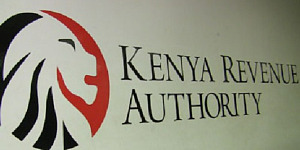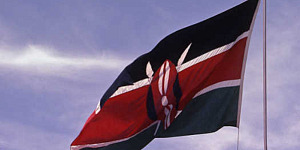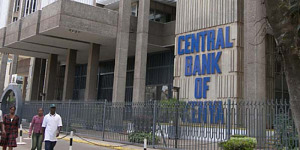 Fitch Ratings has affirmed Kenya's Long-term foreign and local currency Issuer Default Ratings (IDR) at 'B+' and 'BB-', respectively, with Stable Outlooks. Fitch has also affirmed Kenya's Short-term foreign currency IDR at 'B' and Country Ceiling at 'BB-'. The issue ratings on Kenya's senior unsecured foreign currency bonds have also been affirmed at 'B+'.
Fitch Ratings has affirmed Kenya's Long-term foreign and local currency Issuer Default Ratings (IDR) at 'B+' and 'BB-', respectively, with Stable Outlooks. Fitch has also affirmed Kenya's Short-term foreign currency IDR at 'B' and Country Ceiling at 'BB-'. The issue ratings on Kenya's senior unsecured foreign currency bonds have also been affirmed at 'B+'.
KEY RATING DRIVERS
The affirmation reflects the following factors:
The five-year average growth rate picked up from 3.8% in 2012 to 5% in 2014, above the 'B' median, but below regional peers, held back by domestic and weather-related shocks. Violence following the 2007 elections and the threat of violence in the run-up to the March 2013 elections curtailed growth. Rising security challenges from terrorist attacks could contain future growth. Infrastructure challenges and a deteriorating business environment have also hampered the economy. The authorities aim to boost growth above 7% by 2017, supported by rising agricultural production and continued infrastructure investment. Improving the business environment and the security situation will be important if this target is to be reached.
The current account deficit is forecast to have narrowed to 7.8% of GDP in FY14, down from 9.4% of GDP in FY13. The authorities cite improved data collection, a process that has been underway for the past two years, for the better than expected outturn. An upward revision to GDP expected in September 2014 should mean the current account deficit improves to 6% of GDP in FY15. Kenya's debut Eurobond issue resulted in international reserves rising above USD6bn in July 2014, covering over four months of current external payments (CXP), above the 'B' median of 3.3 months.
The June 2014 budget for FY2014/15 maintained Kenya's recent bias towards loose fiscal policy - a deficit of 7.4% of GDP was announced. Increasing capital expenditure remains a government priority, including the development of the port at Lamu, geothermal power stations as well as roads and the new standard gauge railway. Widening deficits placed pressure on debt ratios, which rose from 42.9% of GDP in 2008 to 53.5% in 2013. However, rising government revenue, well developed domestic capital markets and strong institutional capacity, increases Kenya's debt carrying capacity relative to its peers. The upward revision to GDP expected in September would see debt decline to 45% of GDP, only slightly above the 'B' median of 42.5%.
The government remains focused on improving the business environment, which has been on a declining path since 2008. Over the past six months, the government has made it easier to register a company and trade across borders. The time taken to move goods out of the Mombasa port has fallen sharply; non-tariff barriers such as roadblocks and weighbridges have also been reduced across the East African Community. However, Kenya's security situation has continued to deteriorate following the bombing of the Westgate Shopping Centre in 2013.
Weak governance remains a constraint on the ratings, worsening in recent years based on World Bank indices. A lack of evidence is expected to lead to the ICC case against President Kenyatta being dropped. The trial against Deputy President Ruto continues, although challenges bringing witnesses to The Hague remain. Other constraints on the ratings include per capita income of only one-third of the 'B' median as well as below-peer scores on measures of the business environment and human development.
RATING SENSITIVITIES
The Stable Outlook reflects Fitch's assessment that upside and downside risks to the rating are
currently well-balanced. The main factors that individually, or collectively, could trigger negative rating action include:
- A substantial weakening in public finances relative to peers, related to rapid increases in current expenditure.
- A sharp widening of the current account deficit, not matched by an increase in long-term financing, would worsen external vulnerability.
- A marked deterioration in the political and security situation that undermined Kenya's long-term growth performance.
- A weakening of the macroeconomic policy-making framework.
The main factors that individually, or collectively, could trigger positive rating action include:
- An improved track record of economic management to ensure macroeconomic stability.
- A commitment to curtail current fiscal expenditure and promote fiscal consolidation.
- Further regulatory reforms to foster an improved business environment and faster economic growth.
KEY ASSUMPTIONS
Fitch assumes that GDP growth will recover to about 6% on average in the medium term, supported by rising infrastructure investment and the development of the oil sector. No widespread drought is assumed.
Fitch assumes a basic degree of political stability is maintained.






































